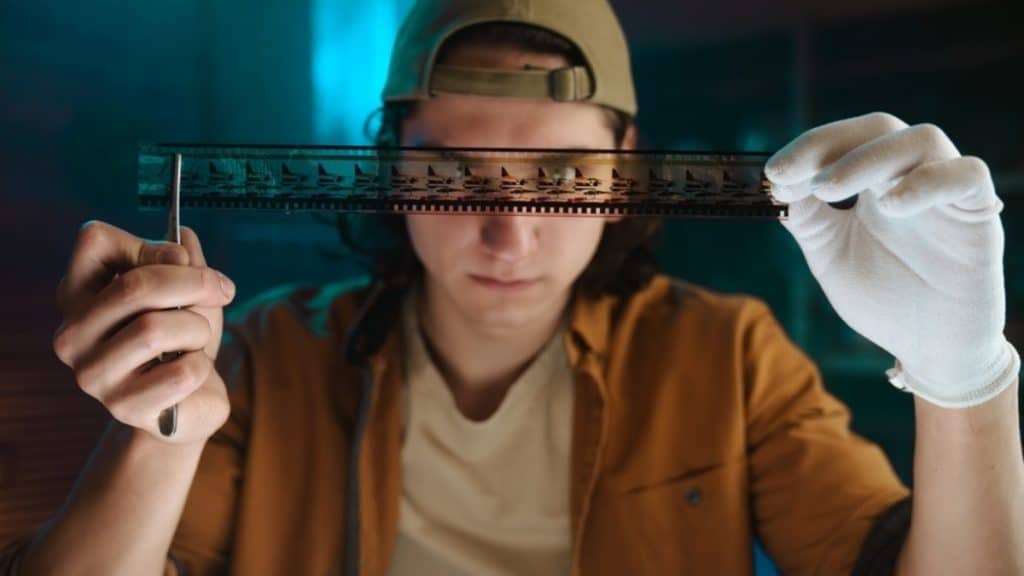Movie producer and Orwo Studios principal Jake Seal is a prominent figure in the British entertainment industry who has made a significant contribution to the craft of analogue filmmaking, often pioneering technologies (for example, a mobile 35mm laboratory) and achieving several world firsts, including numerous new colour and black-and-white film stocks, as well as cutting-edge archiving stocks for the Library of Congress, Piql and BFI. This article will look at celluloid film restoration, outlining the practices used to breathe new life into classic films to ensure their longevity and continued appreciation.
Restoring movies is a meticulous process that ensures the survival of cinematic heritage, enabling future generations to experience the magic of classic movies. Over time, films can deteriorate due to a range of different factors, chief among them chemical reactions, improper storage and physical damage. Restoring movies to their original condition, or as close as possible, is a painstaking process that involves removing scratches, dirt and imperfections, addressing sound-related issues and correcting colour.
For much of the 20th century, movies were distributed on nitrate film. The material may have been comparatively affordable, but it was also highly flammable and prone to decay. Additionally, following their run at the cinema, many movie reels were simply discarded, paving the way for an astronomical loss of film history. Even rolls of projected film that were retained by projectionists and eventually found by collectors would often be so badly damaged it was impossible to watch them, so they also were disposed of. Pushing against this tide of damage, destruction and decay is a small group of film restoration professionals dedicated to scanning and restoring iconic movies for the digital age.
Film restoration is about more than preserving the past: it is integral to the future of cinema. Many iconic motion pictures are at risk of being lost forever if they are not properly restored. Film restoration ensures epic titles remain accessible to audiences, filmmakers and scholars. In addition, restoring old movies allows audiences to experience these classics anew, enjoying them in superb quality, as intended by the original filmmakers.
Requiring a fine blend of technical expertise and artistic sensibility, film restoration is an arduous and complex task. The first step is physically inspecting the film and checking for signs of damage or deterioration. Once any issues are identified, various techniques can be employed to remedy them, such as manual cleaning, digital restoration and colour correction. Restorationists must maintain a delicate balance between preserving the movie’s original look and feel and enhancing its overall quality.
Film restoration involves an array of manual and digital techniques, from physically repairing damaged film to utilising digital techniques to correct colour, enhance image quality and remove noise. Film restoration techniques demand a thorough understanding of technology, film history and artistry.
Several key challenges attach to the restoration of movies, chiefly the condition of the original film, the extent of any damage and the availability of resources. Some films may have damaged or missing frames, making it hard to recreate the original sequence. Older movies may have been shot on different formats, demanding specialist knowledge and equipment. Film restoration professionals are dedicated to preserving cinematic history despite these challenges.
Without intervention, industry insiders warn that thousands of films could disappear forever, including many examples that are just a few decades old. Experts suggest that 90% of early silent films have already been lost due to fire, poor storage and other factors. Old movies convey a colossal amount about their period, serving not only as entertainment but as a powerful cultural commentary, conveying prevailing social attitudes and constructs at the time. Films made within a social context convey what was acceptable then, helping audiences to understand where they came from. Restoring old movies is a difficult and expensive process, but it is ultimately well worth the price, not just providing entertainment but also enabling audiences to immerse themselves in cinematographic and cultural history.


